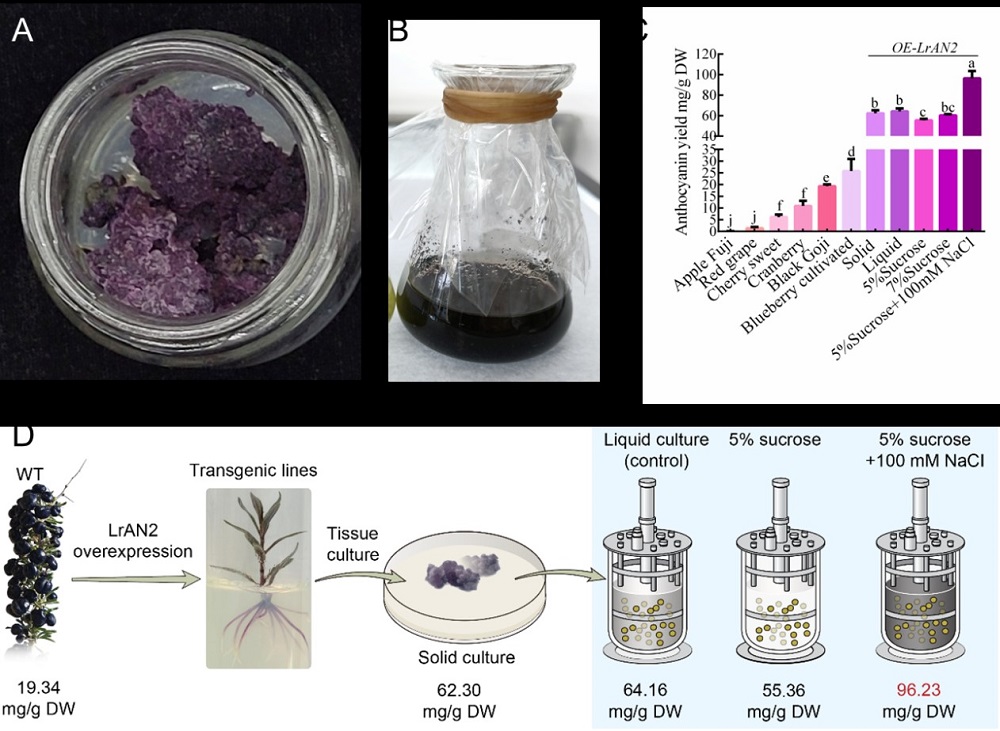LrAN2 overexpression in black goji callus promoting the excessive accumulation of petanin, a promising food blue colorant
In this study, an integrative analysis of multiple omics datasets revealed that the LrAN2 transcription factor serves as a key regulator of anthocyanin production in LRF. Overexpression of LrAN2 (LrAN2OE) in callus significantly increased anthocyanin accumulation compared to the control. By optimizing the LrAN2OE suspension cell culture system, a high yield of 96.23 mg/g dry weight (DW) of anthocyanin was achieved, which is markedly higher than the typical range found in fruits or vegetables (0.08-25.77 mg/g DW). Several noteworthy findings were uncovered in this study: (1) LrAN2 acts as a central regulator of anthocyanin biosynthesis not only in LRF but also in L. ruthenicum callus (LRC), making it a promising candidate for metabolic engineering of anthocyanins in the food industry; (2) The primary anthocyanin compound, petanin, which is a potential blue food colorant, found in LRC is identical to that in LRF; (3) LrAN2 coordinates the enhanced biosynthesis and accumulation of anthocyanins through multiple regulatory mechanisms, including miRNA regulation, transcriptional regulation, redox homeostasis regulation, and metabolic flux adjustments; and (4) LrAN2 also promotes increased biomass in LRC compared to the control. These findings lay a strong foundation for the metabolic engineering of petanin as a food colorant, with significant potential applications in the food industry. This study also successfully overcomes the temporal and spatial constraints of black goji growth cycles and planting areas, enabling efficient anthocyanin biosynthesis under controlled cell culture conditions, thereby indirectly safeguarding the wild germplasm resources of black goji.
The study titled“Multi-omics reveal the molecular basis of LrAN2 overexpression in black goji callus promoting the excessive accumulation of petanin, a promising food blue colorant”was published online in Food Frontiers. Peiyan AI and Guo WEI are the co-first authors and Prof. Shaohua ZENG and Prof. Ying WANG are the co-corresponding authors. This study was financially supported by National Natural Science Foundation of China, Guangdong Science and Technology Plan Project.
The article link is: https://onlinelibrary.wiley.com/doi/10.1002/fft2.440

File Download: